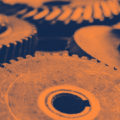Finally we can talk not only about economic recovery but also about companies that have begun to invest again, and on this we are all more or less in agreement. Nowadays, as technology is evolving more and more, there are many companies that, in addition to investing in tools to improve their production, are also doing so to expand their internal research and development offices with the aim of once more focussing on innovation and in turn on marketing products that are more attractive during this specific economic period to be more competitive. And it is precisely R&D investment that I would like to discuss today because the question I am asking myself and that I would like to respond to in this post is perhaps slightly in contrast with what has been the most widespread sentiment lately
Where is the sense in investing to strengthen your company’s R&D department today?
In a post of a few years ago I wrote that the true heart of the Italian entrepreneurial network is made up of a multitude of small and medium-sized enterprises that, in large part, continue to maintain internal design departments, even though in some cases they are almost inactive.
Since that post roughly four years have passed and, then as now, I think it should be evaluated very carefully whether or not to continue running a technical department. I mean if a company produces projects continuously, then not only does it make sense to keep it but it is also worth – if necessary – using external entities for the purposes of support. I wonder though what might be the usefulness of having an internal R&D department if then new products are never launched. One of the important tasks of the technical office is also to improve and optimise existing products (adaptation, new materials, regulations…), of course this is true. But the fact remains that new products sometimes need to be made to justify its existence. Am I wrong?
But returning to the main discussion of the post:
Today most Italian firms agree in saying that it is a good time to invest in your own R&D to create new products, to optimise existing ones and to be more competitive on the market.
Apparently this strategy seems to be working. The problem, in my opinion, is that it is based on erroneous reasoning. The exact same erroneous topic that you often hear in relation to advertising, namely: “I will invest in advertising when I have the money; when I don’t have it, I will cut that cost because I can do without it“. But does that make sense I wonder?
The effort of cultivating and trying to expand your research and development department should take place more so during times when things are bad, not when they are good. If you do something when everyone else is doing it, where is the competitive advantage in that?
Paradoxically, it is precisely when things are going well that R&D can afford to slow down (of course I am stating this somewhat absurdly as even when things are going well R&D should continue working), but when they are bad, it should work more diligently to improve products to make them more attractive and competitive and to create new ones. Do you agree?
Before I offered the example of advertising, but perhaps the most apt one and the one that we see first-hand is linked to investments in new technologies where the basic reasoning is similar.
Perhaps the most challenging investment, from an economic and less productive point of view in the history of MICROingranaggi – I refer to the evolventimeter – we made in fact in 2009, therefore in the midst of the economic crisis. I remember that at the time my choice was in absolute contrast with the general sentiment. But what better time than that? The economic conditions were very favourable, there was time for training (because there were fewer orders) and sooner or later the market would be recovering (cycles and economic recycles) and when that time came we would be ready to start with something additional to offer.



